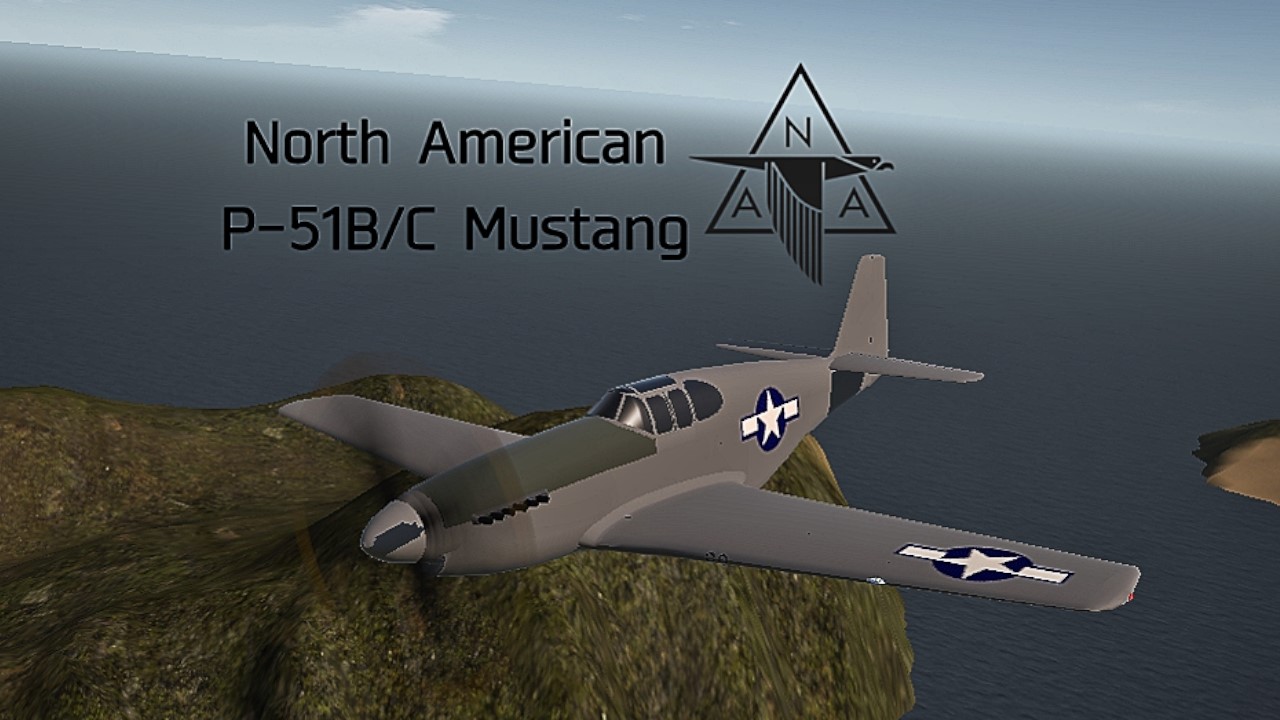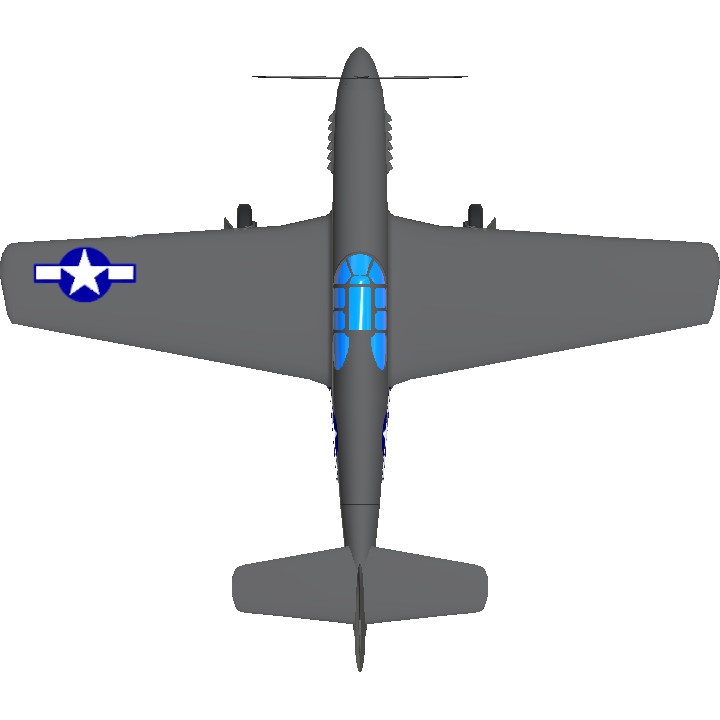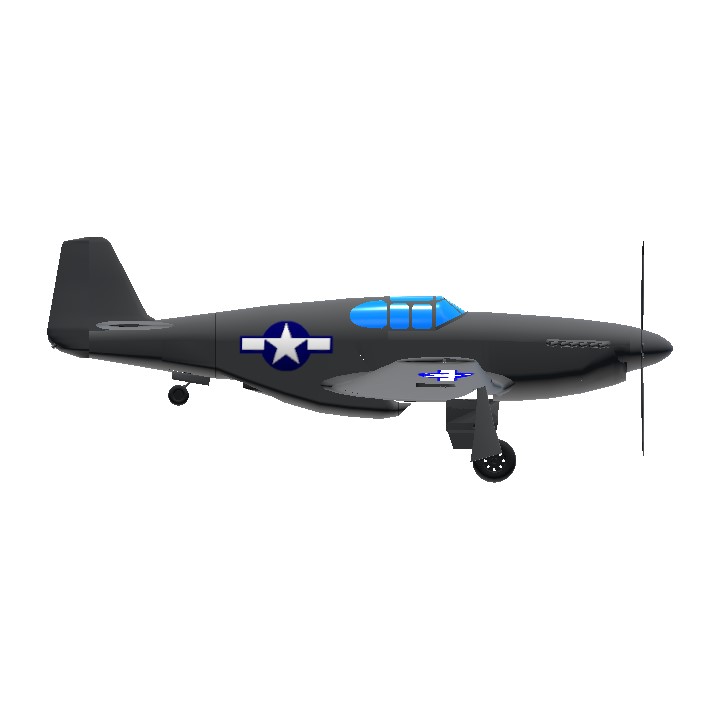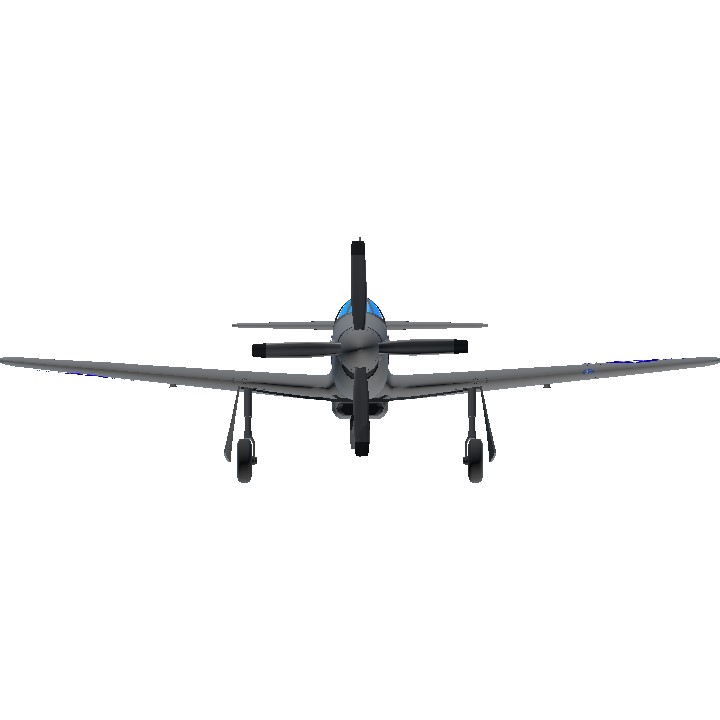AG1 - Navigation/Position Lights
AG2 - Landing Light
AG3 -
AG4 -
AG5 - Pylons (Drops Tank/Bombs if added)
AG6 -
AG7 -
information Source:
https://www.nationalmuseum.af.mil/Visit/Museum-Exhibits/Fact-Sheets/Display/Article/196263/north-american-p-51d-mustang/
The Mustang was among the best and most well-known fighters used by the U.S. Army Air Forces during World War II. Possessing excellent range and maneuverability, the P-51 operated primarily as a long-range escort fighter and also as a ground attack fighter-bomber. The Mustang served in nearly every combat zone during WWII, and later fought in the Korean War.
In the fall of 1942, Mustangs in the United States and Great Britain were experimentally fitted with British Merlin engines. One in the United States flew a remarkable 441 mph at 29,800 feet -- about 100 mph faster than the P-51A at that altitude. Mass production of the Merlin-powered P-51B and P-51C soon followed (nearly identical, North American produced the "B" in Inglewood, Calif., and the "C" in Dallas, Texas).
In December 1943 the first P-51B/C Mustangs entered combat in Europe with the 354th Fighter Group "Pioneers." By the time of the first U.S. heavy bomber strike against Berlin in March 1944, the USAAF fielded about 175 P-51B/C Mustangs. Along with P-38 Lightnings, these P-51s provided sorely needed long-range, high-altitude escort for the U.S. bombing campaign against Germany.
Specifications
General Characteristics
- Created On Android
- Wingspan 37.0ft (11.3m)
- Length 32.2ft (9.8m)
- Height 12.6ft (3.8m)
- Empty Weight 8,293lbs (3,761kg)
- Loaded Weight 8,958lbs (4,063kg)
Performance
- Horse Power/Weight Ratio 0.189
- Wing Loading 33.6lbs/ft2 (164.2kg/m2)
- Wing Area 266.4ft2 (24.8m2)
- Drag Points 2074
Parts
- Number of Parts 542
- Control Surfaces 0
- Performance Cost 2,026




